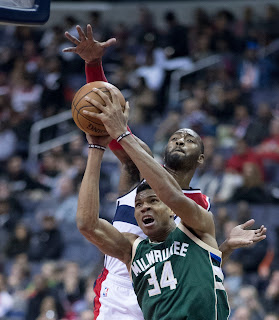For the third consecutive year, the NBA Finals pits two of the best teams the league has ever seen against each other in the Golden State Warriors and the Cleveland Cavaliers. In what has otherwise been a very predictable NBA Playoffs, the crescendo showcases a matchup that features two teams that have been leaps and bounds ahead of every other team in the NBA for the past 3 years, which will surely result a series full of exciting plays and thunderous dunks.
Golden State has steamrolled their way through the playoffs to this point, going a 12-0 after completing sweeps of the Blazers, Jazz, and Spurs. Completing a perfect first three rounds is a feat only accomplished by the 2001 Los Angeles Lakers, who ended up 16-1 overall, and were one of, if not the, most dominant playoff team of all time. In the Eastern Conference, Cleveland was almost able to replicate the incredible success of their counterparts, finishing 12-1 after their first 3 rounds of play. Needless to say, all signs point towards this being an incredibly evenly-matched series, one that adds another entry to this epic three-year war, and will ultimately decide who the superior of the two superteams is.
-----
The lights went down in Oracle Arena on Thursday, May 2nd, and the minds of the players, coaches, staff, and fans swirled with questions. A series that places so many legacies the line was about to tip off. The storylines of so many talented players clashing in the matchup that fans expected all year long. Will Durant get his first ring? Will Lebron continue to cement himself as the greatest player of this generation? Will Klay Thompson break out of his playoff-long shooting slump? Will Kyrie Irving get the best of Stephen Curry again? A few of those questions took a few steps toward getting answered in the opening game of this epic series, and here’s a few things we learned...
1. Kevin Durant looks like the MVP
The 2014 MVP winner came out on a mission from the opening tip. Durant poured in 22 points in the first half alone, and finished with an astounding 38pt/8reb/8ast line. Just as we suspected here at reversejam, he looks absolutely unguardable. Even LeBron James had a lot of trouble staying in front of him, typified by this turnover-turned-slam that conspicuously made its way right behind LeBron to set up this tomahawk jam. The Warriors ran the offense almost exclusively through him when he was on the floor, running high pick and rolls that allowed Durant to run rampant through the paint and use his one-of-a-kind combination of size, speed, and agility to finish with ease. The Warriors also turned it over a Finals-record-tying 4 times the entire game, and Durant was responsible for… 0 of them. Combined with the 54% shooting from the field, 88% from the line, and being +16, he had one hell of a game. With the performance he commandingly puts himself at the front of the Finals MVP race.
2. The Cavaliers’ Turnover Problem
Cleveland turned the ball over 20 times in Thursday’s game, which would be poor on any night, but when compared to their opponent, who turned the ball over just 4 times, it’s nearly impossible to win a game. The -16 turnover differential the Cavs brought upon themselves was inexcusable on basketball’s biggest stage, and it was largely due to LeBron James’ 8 turnovers. LeBron did get caught up in a couple of charge calls, but many of the miscues came from the Warriors playing the passing lanes excellently. James has always had a knack for squeezing in high-velocity passes through hairpin gaps between unsuspecting defenders, and that usually works great against the other 28 teams in the association. However, the Warriors are a different breed entirely. They hounded the lanes all game, and it resulted in 12 steals for the blue and gold, compared to a whopping zero on the other end. (You can take a look at some of the Cavs subpar defensive plays here) The Warriors have established themselves as one of the best defensive teams in the league, relying on extraordinary effort from every player on the floor at any given time, led by DPOY finalist Draymond Green. If the Cavs want to bounce back from the discrepant score in Game 1, the turnovers have got to go down. The victor of the series will likely be the team that can take care of the ball better, as both are prone to being sloppy with the orange, and the Warriors have the early edge.
3. The Quiet Splash Brother
While Stephen Curry has regained his mojo and is filling it up in the playoffs, (28.5PPG on 50.2% shooting) his running mate has hardly stood out on the offensive end. Klay Thompson has averaged just 13.8PPG on 36.6% shooting throughout the entire playoffs, numbers hardly near his regular season mark of 22.3PPG. Klay hasn’t been a playoff choker either, last year he led the playoffs in total points while averaging 24.7PPG and 4.2 made 3-pointers per game. However, kudos to Thompson in that he hasn’t let the poor offensive showing affect him on the other end of the floor. He’s still showcasing that he is one of the premier defensive 2-guards in the NBA, exemplified in Game 1 on multiple possessions of shutting down LeBron James and Kevin Love (both who have more than 35lbs on him) in the post. While his defense has remained impeccable, it has to be concerning for the Warriors to have their 3rd-leading scorer in this deep of a shooting slump. However, the addition of Kevin Durant and his ability to put up big numbers on any night has more than amply made up for Thompson’s lack of production. Still, it would be nice to see the homegrown Splash Brothers firing on all cylinders, and it would definitely help their chances in this series.


























